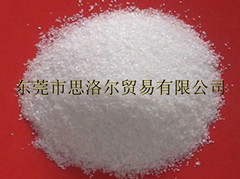Application of texture preparation in ink
One factor to improve the anti-friction and scratch resistance is to reduce the friction coefficient of the surface of the coating, so that the sliding tendency of the object when it contacts the surface of the coating is greater than the tendency of scratching. In this respect, the effect of the sand flour is similar to that of silicone oil, except that the former is small. The dispersed particle form is present on the surface of the coating. It takes only a small amount to achieve scratch resistance.
Texture preparation, added to the coating, greatly reduces the tendency to be rubbed and polished, while maintaining low gloss durability is often desirable in applications. For example, in the alkyd varnish, when the amount of the texture preparation is 1.5%, the anti-wear value of the coating film is doubled, and when the amount is 3%, the anti-wear value is increased by 5 times.
When metal objects are in contact with the coated product, they sometimes leave a black mark on the film, and the addition of texture preparation to the film reduces this tendency or makes the print easier to wipe off. The use of texture preparation in printing inks can significantly improve the abrasion resistance of the ink.
3, anti-blocking
Some workpieces, such as wood or metal objects, tend to stack up in a short period of time after coating. Advances in printing technology also require inks to avoid staining of printed matter. Texture preparation can prevent adhesions and stains caused by the accumulation of printed or printed matter.
4, anti-precipitation, anti-sagging, thixotropic. The positioning of metallic pigments.




